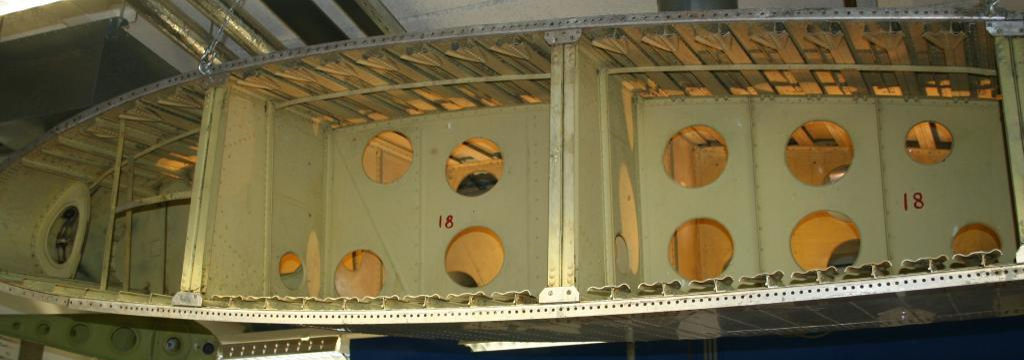3.4.6 Main Takeaways on Wing Structures
Course subject(s)
Module 3. Aerospace Structures

Each part of the wing has its own primary set of functions:
Ribs serve to maintain the aerodynamic shape of the wing, introduce local loads into the structure, introduce aerodynamic and fuel loads from the skin to the structure, prevent buckling and seal the integral fuel tank.
Spars have the function to carry bending loads in the wing. The most common shape is an I-beam of some sort, with the web taking on any shear loads to prevent diagonal deformation and the flanges taking on the bending. To allow for the changing loads of the span of the wing they are often tapered in design.
Torsion box has as its main function to carry the torsion loads. It is made up out of two spars, the stiffened wing skin panels and are sealed on either side by ribs. The introduction of the torsion box principle in wing design allows the wing to function as a free load bearing structure.
Intersections of ribs with skin stiffeners need special attention to ensure the load paths are not disturbed.
What type of Rib, Spar and Torsion box design you end up with depends on many different things such as cost, manufacturability, experience and availability of material and equipment. It is always a trade-off between many different criteria.

Introduction to Aerospace Structures and Materials by TU Delft OpenCourseWare is licensed under a Creative Commons Attribution-NonCommercial-ShareAlike 4.0 International License.
Based on a work at https://online-learning.tudelft.nl/courses/introduction-to-aerospace-structures-and-materials/.



